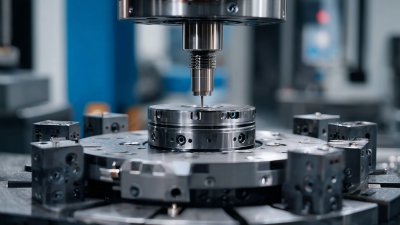5 Essential Tips for Mastering Plastic Engineering in the Next Decade
As the plastic engineering industry continues to evolve rapidly, professionals must adapt to stay competitive in this dynamic landscape. According to a report by MarketsandMarkets, the global plastic engineering market is projected to reach $1 trillion by 2026, growing at a CAGR of 5.3% from 2021. This growth is driven by increasing demand for lightweight materials in automotive and aerospace applications, as well as the rising need for sustainable solutions. Mastering plastic engineering requires not only a deep understanding of material properties and processing techniques but also an awareness of emerging trends and innovations. In the next decade, engineers must harness advanced technologies such as additive manufacturing and biodegradable plastics to meet both regulatory standards and consumer expectations. This article will outline five essential tips that will empower plastic engineers to thrive and make a significant impact in their field amidst these transformative changes.

Harness Advanced Materials: Exploring the Rise of Bioplastics and Performance Polymers for Sustainable Solutions
The next decade in plastic engineering promises significant advancements, particularly with the increasing adoption of bioplastics and performance polymers. Bioplastics, derived from renewable resources, are becoming a compelling alternative to traditional petroleum-based plastics. Their ability to biodegrade and reduce the carbon footprint addresses the pressing environmental concerns associated with conventional plastic use. The rise of bioplastics signifies a critical shift towards sustainable solutions, as these materials can be tailored for various applications, from packaging to automotive components.
In parallel, performance polymers are emerging as key players in enhancing the functionality of plastic products. These high-performance materials offer superior characteristics such as increased durability, temperature resistance, and chemical stability. Engineers are now equipped to design products that not only meet rigorous industry standards but also contribute to sustainability goals. By focusing on the development and application of bioplastics and performance polymers, professionals in plastic engineering can drive innovation while responding to global sustainability challenges, ultimately shaping a greener future for the industry.
Embrace Automation: Implementing IoT and AI Technologies in Plastic Manufacturing Processes to Boost Efficiency
As the plastic engineering industry evolves, integrating automation through IoT (Internet of Things) and AI (Artificial Intelligence) is becoming imperative for manufacturers aiming to enhance operational efficiency. According to a report by MarketsandMarkets, the global IoT in manufacturing market is expected to grow from $29.5 billion in 2020 to $50.1 billion by 2025, which illustrates a compound annual growth rate (CAGR) of 11.8%. This growth trajectory highlights the industry's push toward smart manufacturing solutions that streamline processes, reduce waste, and improve product quality.
Incorporating AI technologies further transforms plastic manufacturing by enabling predictive maintenance and real-time monitoring. A recent study from McKinsey indicates that AI could potentially add $9.5 trillion in value to the manufacturing sector by 2025. For plastic engineers, this means leveraging machine learning algorithms to optimize processes, resulting in up to 30% efficiency gains. Such advancements not only reduce operational costs but also empower engineers to redesign workflows that can effectively respond to market demands, making them crucial for businesses looking to thrive in a competitive landscape.
5 Essential Tips for Mastering Plastic Engineering in the Next Decade
| Tip | Description | Benefits | Technologies Involved |
|---|---|---|---|
| Embrace Automation | Implement advanced automation technologies to streamline production. | Increased efficiency and reduced labor costs. | Robotics, Machine Learning |
| Utilize IoT Solutions | Integrate Internet of Things devices to monitor manufacturing processes in real-time. | Enhanced monitoring and predictive maintenance. | Sensors, Cloud Computing |
| AI-Driven Decision Making | Employ AI algorithms to optimize supply chain and production schedules. | Improved resource allocation and reduced lead times. | Artificial Intelligence, Data Analytics |
| Focus on Sustainability | Incorporate sustainable practices and materials in plastic production. | Reduced environmental impact and compliance with regulations. | Recycling Technologies, Eco-friendly Materials |
| Train Workforce | Invest in training programs for employees to adapt to new technologies. | Higher skilled workforce and better implementation of new systems. | E-learning Platforms, Workshops |
Stay Abreast of Regulations: Navigating Global Plastic Waste Management Policies and Compliance Requirements
As the next decade unfolds, plastic engineering professionals must stay informed about evolving global plastic waste management policies and compliance requirements. With the global market for recycled plastics projected to surge from $55.46 billion in 2024 to $132.55 billion by 2035, achieving a compound annual growth rate (CAGR) of 8.25%, it is imperative to align engineering practices with sustainability goals. The increasing attention on biodegradable and bio-based packaging materials highlights the industry's shift toward environmentally responsible alternatives that mitigate plastic pollution.
According to the United Nations Conference on Trade and Development, trade plays a critical role in addressing plastic pollution, emphasizing responsible production and consumption practices. The projected growth of the plastic label market, valued at $4.52 billion in 2022 and expected to reach $6.53 billion by 2030 with a CAGR of 6.3%, underlines the demand for innovative packaging solutions. To navigate these changing regulations effectively, engineers must integrate sustainable design principles that cater to both market trends and compliance with strict environmental standards.

Invest in Continuous Learning: Engaging in Professional Development Programs and Certifications for Career Growth
Investing in continuous learning is crucial for anyone looking to thrive in the ever-evolving field of plastic engineering. Engaging in professional development programs and obtaining certifications not only enhances your technical skills but also expands your industry knowledge. Make it a priority to enroll in workshops and seminars that focus on the latest advancements in materials science and sustainable engineering practices. By staying updated, you position yourself as a valuable asset in your organization, ready to tackle the challenges of the future.
One essential tip is to seek out mentorship opportunities. Connecting with experienced professionals in the field can provide insights that textbooks often overlook. Their guidance can help you navigate complex projects and avoid common pitfalls in your career. Additionally, forming a study group with peers can facilitate shared learning and keep motivation high.
Another vital strategy is to utilize online resources and platforms dedicated to plastic engineering. Websites offering courses and webinars, such as those run by professional engineering organizations, can deepen your understanding of specialized topics such as injection molding or polymer processing. Taking advantage of these resources ensures that you remain competitive and knowledgeable as the industry progresses.

Adopt Sustainable Practices: Integrating Circular Economy Principles into Plastic Engineering Projects and Designs
In the rapidly evolving field of plastic engineering, adopting sustainable practices is crucial for future success. As the global community increasingly recognizes the environmental impacts of plastic waste, integrating circular economy principles into engineering projects becomes essential. This approach emphasizes the design of products that are easier to recycle, reuse, or repurpose, thereby minimizing waste and reducing reliance on virgin materials. Engineers should prioritize materials that can be efficiently reclaimed at the end of their lifecycle, fostering a more sustainable production model.
Implementing circular economy principles also means fostering collaboration across industries. By engaging with stakeholders—including suppliers, manufacturers, and consumers—engineers can develop innovative solutions that address sustainability from every angle. Additionally, incorporating life cycle assessments in the design process helps identify areas for improvement, ensuring that projects not only meet performance standards but also align with environmental goals. By embedding sustainability into the core of plastic engineering, professionals can contribute to a greener future while meeting the demands of an increasingly eco-conscious market.
Related Posts
-

Exploring Innovative Alternatives in Plastic Engineering Solutions
-

7 Compelling Reasons to Choose Advanced Mold Manufacturing for Your Production Needs
-

How to Optimize Your Injection Molding Tooling Processes for Maximum Efficiency
-

Unlocking the Advantages of Best Injection Tooling in Modern Manufacturing Processes
-

10 Reasons Precision Injection Molding Is the Best Choice for Your Business
-

How to Maximize Efficiency in Plastic Injection Molding: Strategies and Industry Insights
